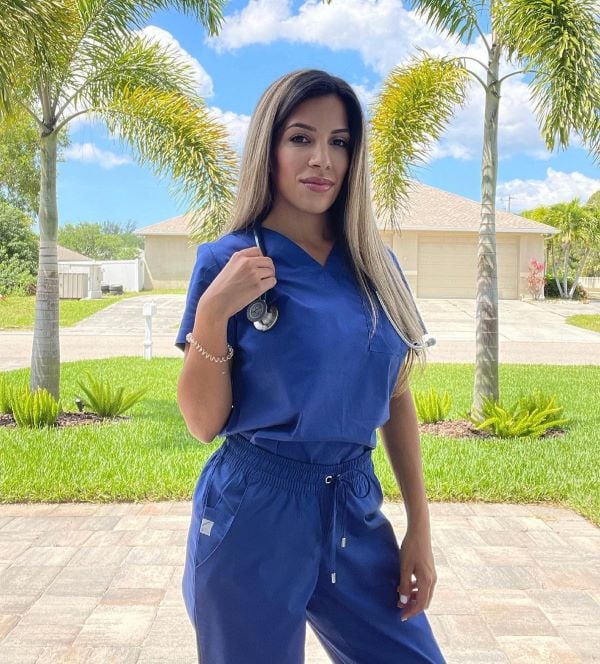Unveiling the Differences Between Male and Female Scrubs
August 21, 2023
By: Cherice Cooper
What are the Differences Between Male and Female Scrubs?
In most cases, the main difference between male and female scrubs lies in the fit and cut of the garment. Male scrubs are typically designed with a looser fit and more boxy silhouette, while female scrubs often have a more tailored and fitted design to accommodate the differences in body shapes.

However, it’s important to note that this can vary between brands and manufacturers. The color and style options might also differ, but these differences are not strict and can vary based on personal preferences and workplace requirements.
In the medical field, scrubs serve as the uniform of choice for healthcare professionals. Over the years, these once-uniform, unisex garments have evolved to include specialized designs tailored to the anatomical and style preferences of both genders.
In this blog post, we’ll delve into the key differences between male and female scrubs, shedding light on how functionality and fashion intertwine in these essential medical uniforms.
1. Cut and Fit: One of the most apparent distinctions between male and female scrubs lies in the cut and fit. Male scrubs are designed with a boxier and roomier silhouette, catering to the broader shoulders and straighter body shapes typical of men. On the other hand, female scrubs often feature a more tailored and contoured fit, accentuating the curves of the body while ensuring comfort and ease of movement.
2. Neckline and Collars: Necklines and collars of scrubs can vary between genders. Female scrubs might offer V-neck or crossover necklines that flatter the chest area and lend a more feminine touch. In contrast, male scrubs tend to have simple round or square necklines without much embellishment.
3. Waist and Hip Design: Women’s scrubs typically come with a slightly higher waistline and more defined hips to complement the female form. Meanwhile, men’s scrubs often have a more uniform waistline and looser hip area, catering to their body proportions.

4. Pocket Placement: Pocket placement on scrubs can be gender-specific to accommodate varying preferences and requirements. For example, female scrubs might have smaller pockets that are strategically positioned to maintain a streamlined appearance, while male scrubs could have larger, more practical pockets.
5. Length and Leg Shape: The length and cut of scrub pants can also differ between genders. Women’s scrub pants might be shorter and tapered for a modern, flattering look, while men’s pants are often longer and straighter for a classic fit.
6. Color and Pattern Options: Traditionally, scrubs came in basic, solid colors. However, modern scrubs now offer a wide range of color and pattern options. Female scrubs might include softer hues and more diverse patterns, while male scrubs might lean towards bolder and more neutral tones.
7. Functional Considerations: Both male and female scrubs are designed with functionality in mind. For instance, pockets are strategically placed to hold essential medical tools, and fabrics are chosen for their durability and comfort during long shifts. The differences in design take into account the various tasks that healthcare professionals perform, ensuring that both genders have access to the necessary tools while maintaining a professional appearance.

The evolution of scrubs from a unisex uniform to gender-specific designs demonstrates a thoughtful consideration for both functionality and individual style preferences. The differences in cut, fit, and design elements cater to the unique anatomies and fashion sensibilities of male and female healthcare professionals. Ultimately, the goal remains the same: to provide comfortable, functional, and versatile attire that supports those on the frontlines of healthcare.
